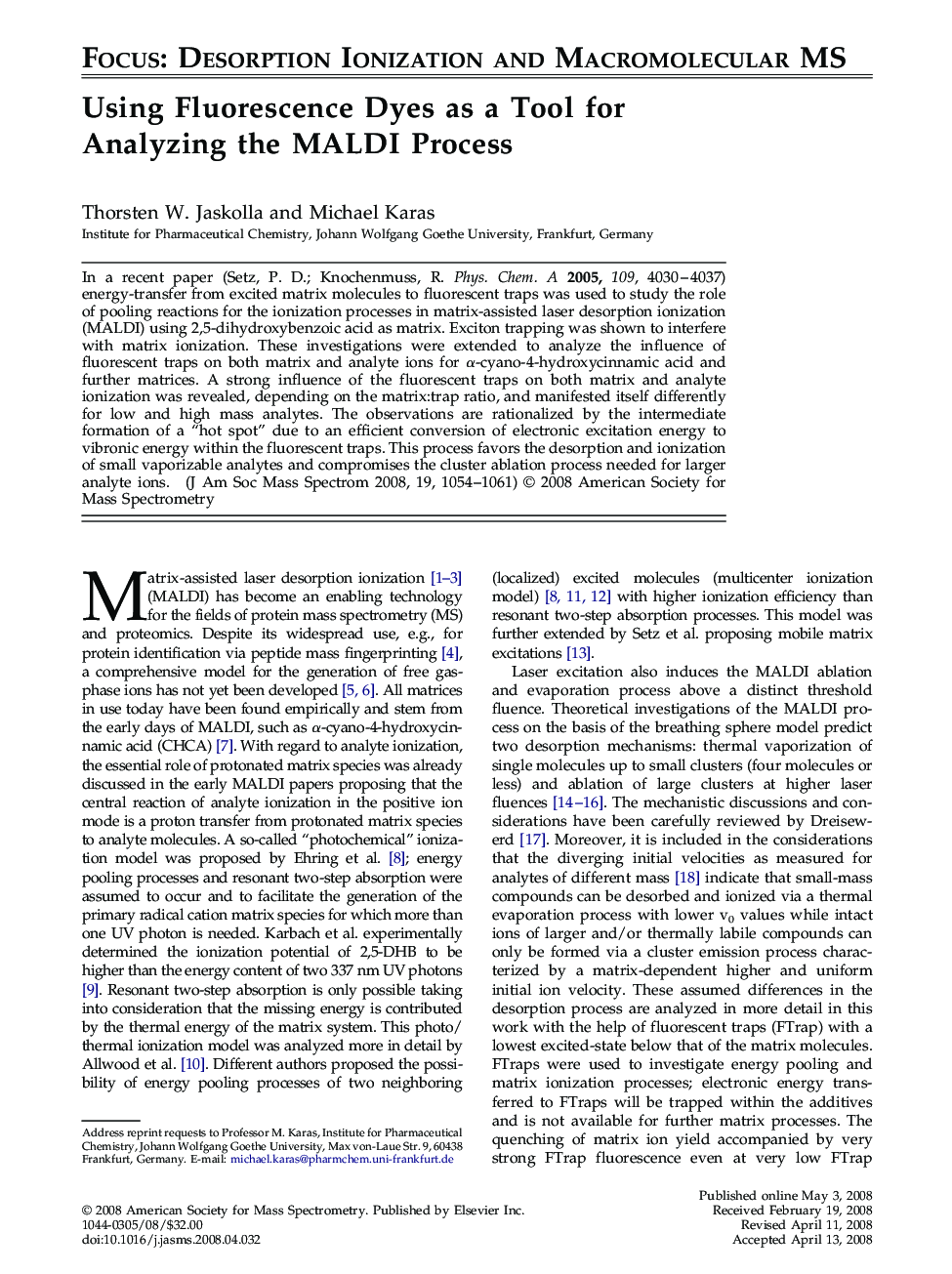| کد مقاله | کد نشریه | سال انتشار | مقاله انگلیسی | نسخه تمام متن |
|---|---|---|---|---|
| 1195879 | 964421 | 2008 | 8 صفحه PDF | دانلود رایگان |

In a recent paper (Setz, P. D.; Knochenmuss, R. Phys. Chem. A2005, 109, 4030–4037) energy-transfer from excited matrix molecules to fluorescent traps was used to study the role of pooling reactions for the ionization processes in matrix-assisted laser desorption ionization (MALDI) using 2,5-dihydroxybenzoic acid as matrix. Exciton trapping was shown to interfere with matrix ionization. These investigations were extended to analyze the influence of fluorescent traps on both matrix and analyte ions for α-cyano-4-hydroxycinnamic acid and further matrices. A strong influence of the fluorescent traps on both matrix and analyte ionization was revealed, depending on the matrix:trap ratio, and manifested itself differently for low and high mass analytes. The observations are rationalized by the intermediate formation of a “hot spot” due to an efficient conversion of electronic excitation energy to vibronic energy within the fluorescent traps. This process favors the desorption and ionization of small vaporizable analytes and compromises the cluster ablation process needed for larger analyte ions.
Journal: Journal of the American Society for Mass Spectrometry - Volume 19, Issue 8, August 2008, Pages 1054–1061